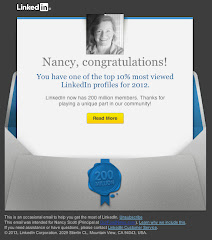Yes. Especially
print.
Iron Mountain Knowledge Center asks, "Do you think the world is abandoning the
printed page? Research indicates that a trend toward the tactile—even among Millennials—is
opening up exciting new creative opportunities for fulfillment collateral."
In 2014, more than eight out of ten American adults would rather read magazines in hard copy than online. Similarly, 67 percent would rather read a book with a spin than one that glows. This information comes from a report by JWT, the New York marketing communications firm formerly known as J. Walter Thompson.
Do you know what's even more
surprising, midway into the second decade of the 21st century? This trend is consistent
among generations, even the grew-up-online Millennials, according to the same
report, "Embracing Analog: Why Physical Is Hot."
Eight out of 10 Millennials
say, "Physical cards/letters make me feel more connected to people than
digital notes (emails, SMS, etc.)." These findings, as well as other
studies, are calling upon the printed page to play a larger role in your
marketing collateral and fulfillment efforts.
Yes. Especially plain vanilla text and “print-like”
apps.
A September 2014 article
in The Atlantic reports that 88
percent of Americans under 30 said they had read a book in the past year
compared with 79 percent of those over 30. At the same time, American readers'
relationship with public libraries is changing—with younger readers less likely
to see public libraries as essential in their communities. But wait … there’s
more.
“Moreover,
young mobile readers don’t want apps and mobile browsers that look like the
future. They want apps that look like the past:
58 percent of those under 50 and 60
percent of Millennials, prefer a ‘print-like experience’ over tech
features like audio, video, and complex graphics. That preference toward plain
text ‘tends to hold up across age, gender, and other groups’.”
Yes. Except for “e-versions.”
In her June 24, 2014 LinkedIn
article Millennials:
Digital vs. Print, Anna Burnham,
coordinator at Everthrive, Illinois, tells this story: “…I hate e-versions. I own a Kindle, and it has been sitting
in a drawer dead since I received it as a gift. Of course I use Twitter to get the
majority of my news, but that is because the quality of magazines and
newspapers has devolved into what I believe to be tabloid quality news … It is
tempting to say that Millennials are e-version addicts who don’t appreciate the
‘older’ ways of doing things; that we are the ones driving the market. But in
reality, what Millennials all crave is a media source, a book, or a show, which
guides us and shows us the meaningful side of aging into adulthood just as
books, the radio, newspapers, and magazines did for the generations before.”
Comme ci; comme ça.
In April 2013, Edelman’s Research Insight featured an article by Alex Abraham, senior VP of
Edelman’s 8095® Millennial Insights Group. His
article was titled “Millennials Hate Traditional Media. Or Do They?” Here’s
what Abraham came up with:
• 93 percent of Millennials had read a magazine in the previous 60 days.
• 23 percent of Millennials had read a newspaper the day before, which was not that much lower than the general population.
Abraham concluded, “One thing I have learned from my research of the Millennial generation is that for every study proving a point, there is likely another saying the opposite. But the insights above do show us that we have not yet entered a world where everything has to be digital to reach Millennials.”
Yes. With
visuals, please.
The Millennial
Marketing blog made a “Yes-But” case in its post titled, “Do
Millennials Read? Yes, But They Read Differently.”
“Perhaps the biggest take away is that Millennials are capable of taking in a lot of visual information at once, probably more than older generations, provided it is presented in an attractive and easily digestible way. This makes good design as important, if not more important, than good writing. In studies where we have had an opportunity to compare age groups, it is striking how much more attuned younger consumers are to the way information appears on the page. Older consumers tend to overlook poor design and focus on the meaning. Millennials have a hard time getting past the way it looks.”
-- scrubbed by
MarketingBrillo

